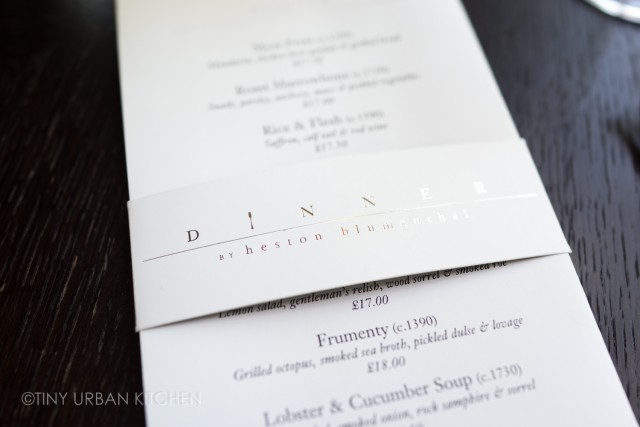
This is the second post in the London & Munich series. Other posts in this series include The Square.
Ask anyone to name the most famous restaurant in London, and almost certainly you will hear the phrase The Fat Duck being thrown around. The Fat Duck is Heston Blumenthal’s flagship restaurant.
Three Michelin stars. #1 restaurant in the World’s 50 Best Restaurants list (2006). Multiple James Beard Awards. And many, many, more. This is the restaurant that visitors most often try to visit when they come to London.
The problem is . . . it’s not in London.
It’s nowhere close. In fact, it’s in a small town called Bray about an hour and a half (via public transportation) from London. In fact, Bray is where Chef Blumenthal has opened his other restaurants, including pubs The Crown at Bray and The Hinds Head (1 Michelin Star). You couldn't access any restaurants from Chef Blumenthal in London.
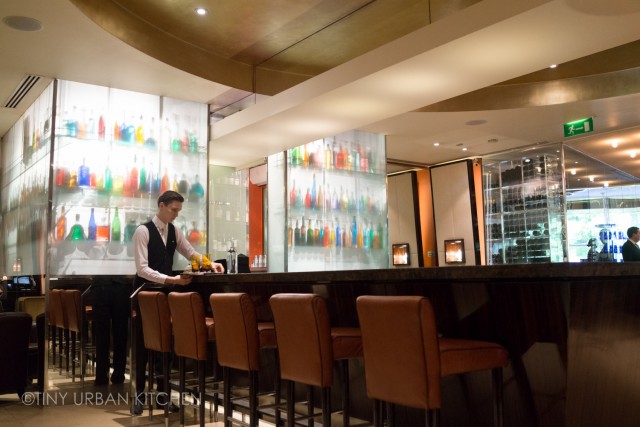
Bar of the Mandarin Oriental
Until 2011, when Heston Blumenthal finally decided to open his first restaurant in London. Simply called Dinner by Heston Blumenthal, the restaurant opened at the Mandarin Oriental Hyde Park in January 2011.
The concept behind Dinner is unique and very British. Blumenthal worked with historians to revive many old, historic British recipes. In the menu, he includes the date around which a particular dish was known and cites cookbooks from which he derived inspiration.
It’s pretty incredible, but some of the dishes date back as far as 1390! Most dishes hover between the 1700’s – 1900’s.
Dinner has received its own fair share of awards. In 2014, Dinner ranked number 5 on the World’s 50 Best Restaurants list, far surpassing even The Fat Duck, which came in at number 47. Dinner itself boasts two Michelin stars and three rosettes in the AA Restaurant Guide.
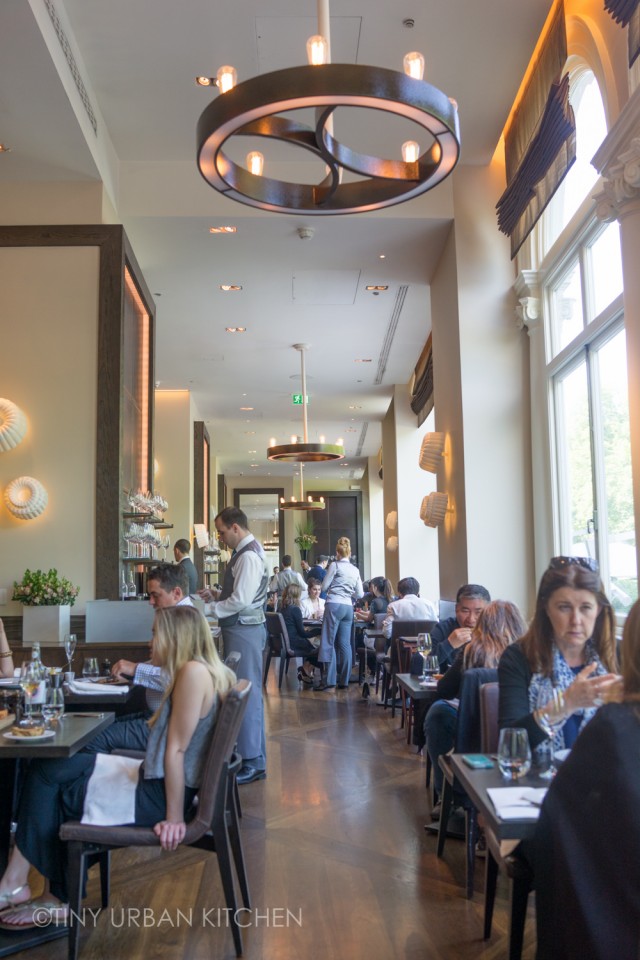

We don't look too tired, do we?
Bryan and I decided to eat our first meal at Dinner. We got off the plan from our overnight ("red-eye!") flight from Boston and pretty much came directly to the restaurant after freshening up at the airport. Talk about being jet-lagged!
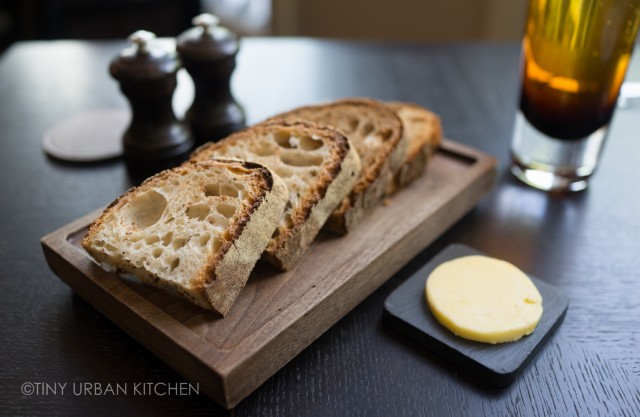
Why is the restaurant called "Dinner"? It is a playful nod to the idea that the main meal of the day, "dinner", has changed its time of day throughout British history. Back when there was no electricity, dinner was taken right before sundown. As time progressed forward, dinner became something people in the city ate after work, while people in the rural areas still ate it during "lunchtime".
At Dinner, you have the freedom to enjoy that same main "dinner" menu any time during the day.
The menu includes both a set-three course lunch and a larger a la carte "dinner" menu. The set three-course lunch costs £38 and allows you to choose a starter, main course, and dessert from a limited, smaller menu. The main menu is also available. You can order a la carte from this menu, which is much bigger and includes many of the restaurant’s signature items.
Since this was our one and only meal here, we decided to order from the expanded, a la carte “dinner" menu.
Thus was born our own fun little phrase – we were having “dinner at lunch at Dinner” (by Heston Blumenthal).
In my brief research about this restaurant, the one dish I heard about more than any other was Meat Fruit (c. 1500), simply described as “Mandarin, chicken liver parfait, and grilled bread” for £17.50.
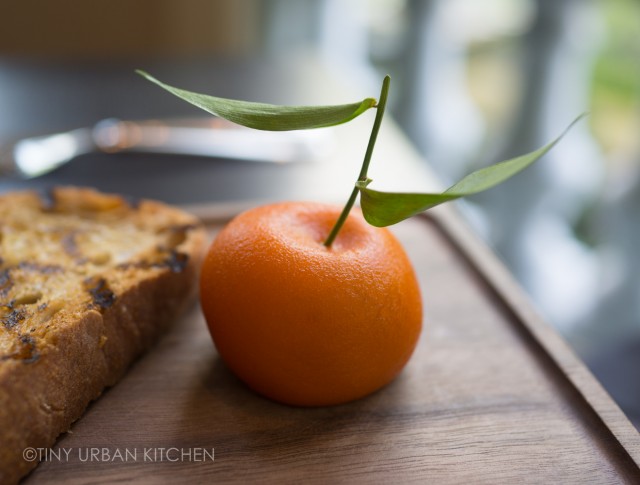
The actual dish was unbelievable. Out came a perfectly shaped “orange” with a slice of thick-cut, grilled bread. When you cut into the “orange”, the inside consisted of a beautiful, creamy chicken liver parfait.
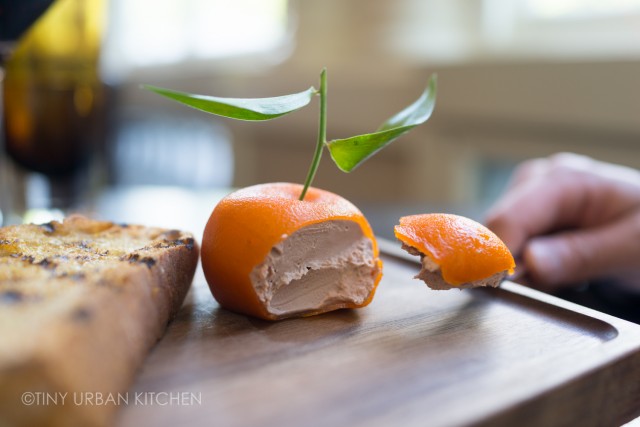
It was not only stunning to look at, it was also a phenomenal dish. The thin orange “skin”, which is actually a Mandarin jelly, tasted like a a refined orange jam and paired really well with the luxuriously creamy liver parfait, which is made from a mixture of chicken liver, foie gras, and countless other ingredients.
Though I am not typically a liver mousse fan, I had to admit that this was excellent. It did not have a strong liver taste (which I liked!) nor was it too heavy. Instead, the creamy, smooth filling reminded me of a mild foie gras accented by just the right amount of sweetness from the orange “peel.”
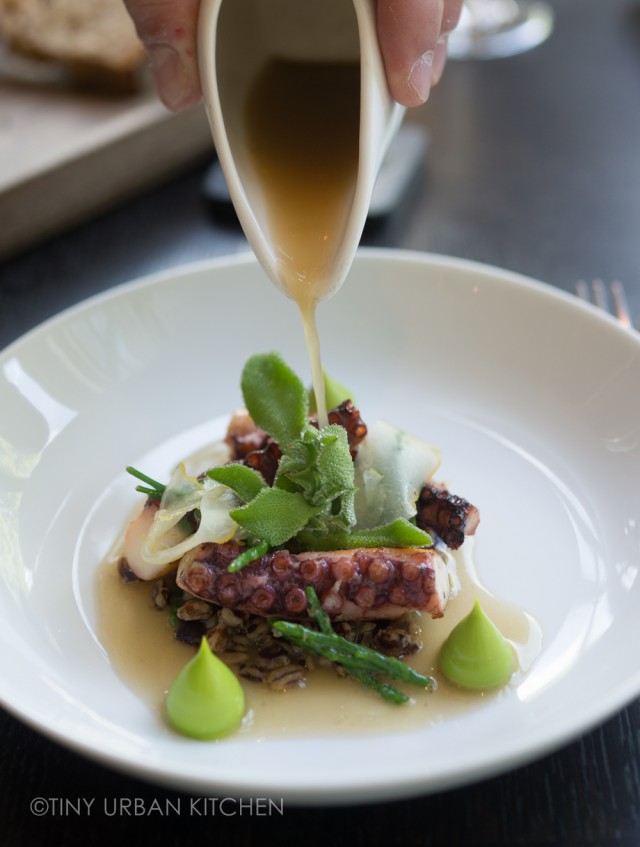
The next course, Frumenty (c.1390), £18, blew me away and ended up being my single favorite dish from this entire Europe trip. The dish consisted of grilled octopus, smoked sea broth, pickled “dulse and lovage”, and slices of pickled Buddha’s hand fruit.
Back in the 14th century, frumenty was a porridge-like dish made by cooking cracked wheat in almond milk or broth. It was often served with seafood and cooked with some kind of fruit.
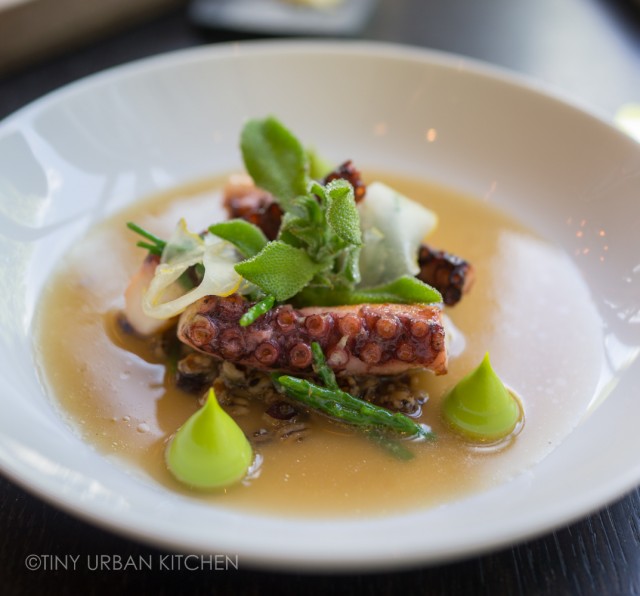
Chef Ashley Palmer-Watts, the executive chef at Dinner, took a creative interpretation of the original, incorporating toasted spelt cooked in an incredibly flavorful smoked sea broth consisting of octopus stock, mussels broth, and much more.
To incorporate more flavors from the sea, Chef Palmer-Watts added sea beans and dulse, a sea algae also known as “sea lettuce flakes” that is a commonly eaten as a snack, especially in Ireland. Finally, thin slices of pickled Buddha’s hand fruit introduced just the right amount of brightness plus stayed true to the original use of fruit in frumenty from medieval times.
The flavors in this dish were astounding and blew both of us away. The sea broth was beautifully smoky yet was balanced by delicate, fragrant notes from the herbs. The octopus was perfectly executed. It was soft and tender, not a bit too chewy at all. Chef Palmer-Watts says it’s one of their most popular dishes, acknowledging that “I think it’s one of our strongest.”
I totally agree.
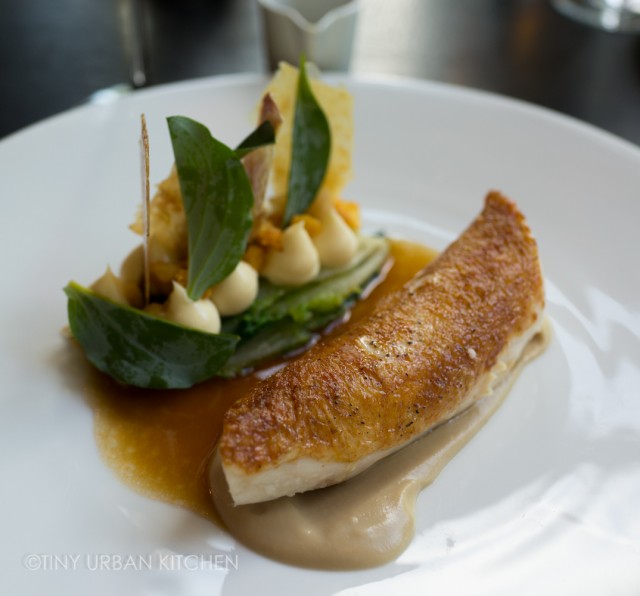
The waiter suggested the Chicken Cooked with Lettuces (c. 1620), which came with a grilled onion emulsion, spiced celeriac sauce, and oyster leaves for £34. The chicken, which I am guessing must have been cooked sous vide, was gorgeously tender and moist. The perfectly browned paper thin skin on top was impressive, and I have no idea how they pulled it off.
The deeply flavored chicken jus was lovely, and I enjoyed the textural contrast between the crunchy bits and the rich sauces. I did personally find the dollops of celeriac sauce (which reminded me of mayonnaise) to be a tad rich, but overall the dish was still quite enjoyable.
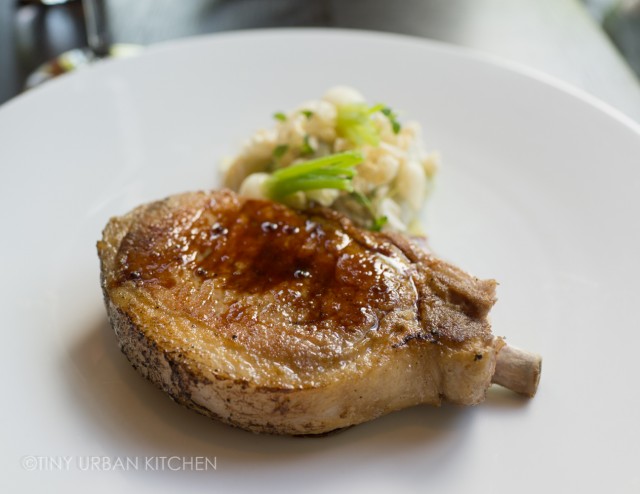
Bryan got the Roasted Iberico Pork Chop (c. 1820), which came with pointy cabbage, onions, and Robert sauce for £38. The pork was surprisingly generously sized (we couldn’t finish it!) and was cooked a perfect medium "pink".
You know a piece of pork is going to be cooked right when the waiter asks, “it will retain a bit of its natural colour. Is that OK?”
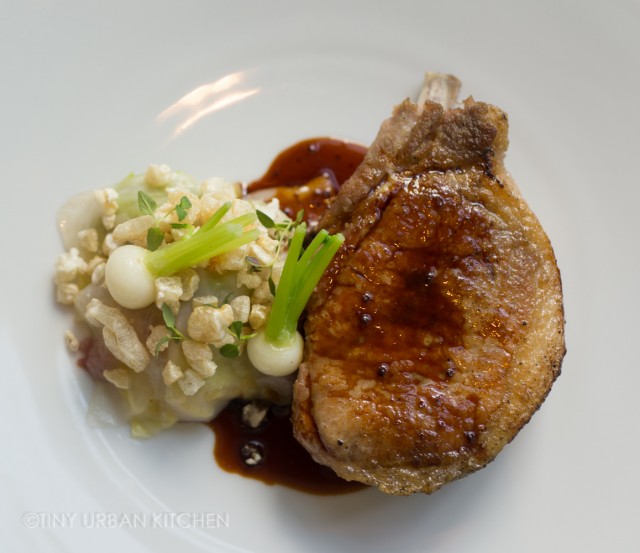
The Roberts sauce was deep, brown, and intense. There were bits of crunch in the sauce, possibly toasted rice, that added a nice textural element to the dish. Overall, it was a fine cut of a beautiful piece of meat that was expertly cooked. Execution was excellent, though the dish overall did not blow me away like some of the earlier dishes.
On a side note, we did appreciate the honesty of our waiter. We overheard him steering another couple away from ordering the filet mignon, saying "if you want a really nice piece of meat, I would recommend the pork chop."
It's always nice to have a server who tells you his honest opinions about a menu.
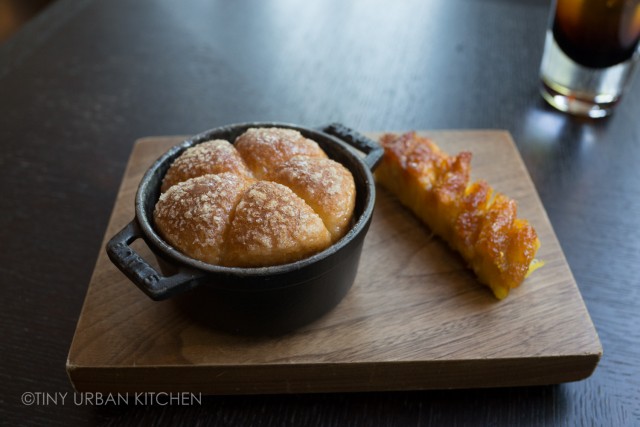
For dessert we decided to share another signature dish. The Tipsy Cake, (c. 1890), £14.50 is a house baked brioche that is filled with a decadent cream sauce made with sauternes, brandy, and vanilla. The decadent brandy vanilla cream soaked bread is served alongside pineapple that is roasted while continuously being basted in a pineapple caramel sauce until it turns golden brown. The dessert is painstakingly complex to make and thus you have to order it at the beginning of the meal so they have enough time to prepare it.
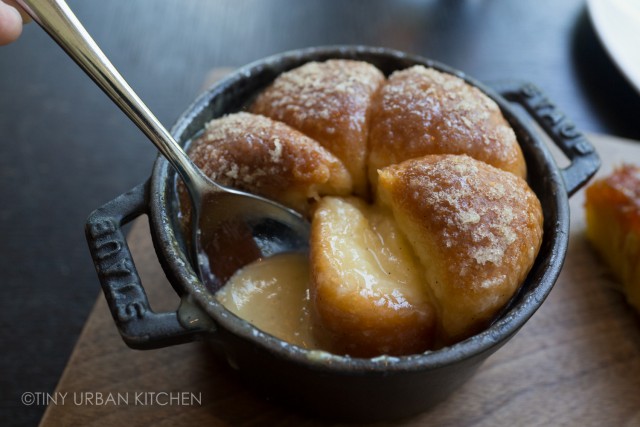
The dessert was fantastic. The super soft brioche soaked up the flavors of the brandy vanilla cream beautifully.
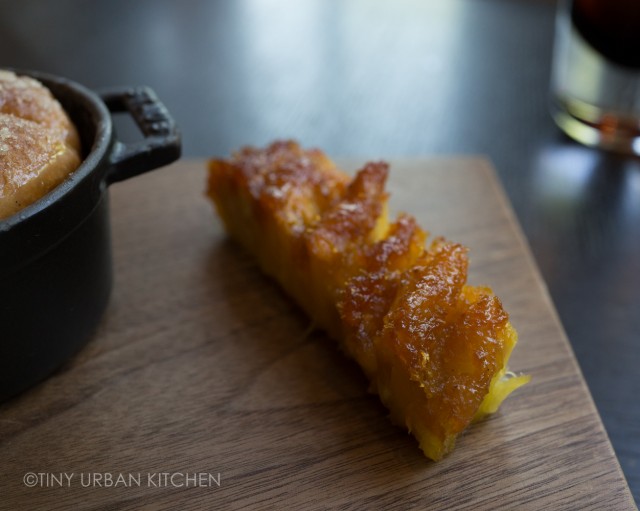
The spit-roasted pineapple was delicious, filled with the toasty sweet flavors of the pineapple caramel that had been slowly basted all over the pineapple slice during the course of our meal. I had only meant to have a taste of it, but together we ended up eating almost all of it.
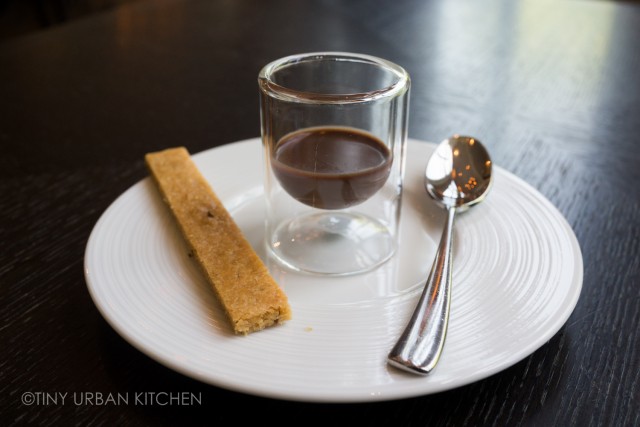
Finally, we ended with a simple Chocolate Earl Grey Ganache and a caraway seed biscuit.
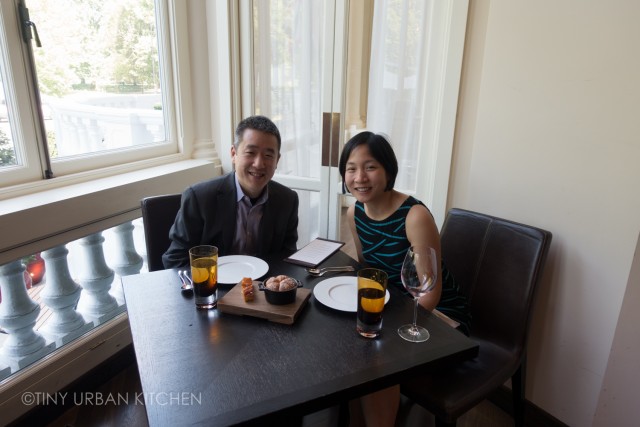
General Thoughts
It was our first meal in London, but it would turn out to be our favorite. Certain dishes, like the Meat Fruit and especially the Frumenty, blew us away with their exquisite flavors and creativity. I loved how the menu items were inspired by old British recipes.
In my reservation, I asked to sit next to the window and got this amazing corner table facing the park across the street. It was perfect.
If you're visiting London and planning on choosing just one fine dining restaurant, I think it makes a lot of sense to choose this one because of its unique British influence. Most of Britain's top fine dining restaurants are French (not a surprise). There's nothing wrong with fine French food (The Ledbury is still my favorite high-end restaurant in London). However, if I were only having one fancy meal in Britain, I would choose a meal that was unusual and unique to London.
Other Details
Reservations can be easily made on Open Table, though you would need to do it through the UK site (you can't use your US based account, as far as I can tell).
Lunch and dinner have the same menu, with the exception of the Set 3-Course Lunch. Although Lunch is a lot cheaper, it does not include any of the signature dishes, like the Meat Fruit, the Frumenty, or the Tipsy Cake, so I would recommend going with the normal a la carte menu if you want to taste these unique dishes.
If you really want to do a tasting, you can reserve the Chef's Table, a special table facing the show kitchen which can seat a minimum of 4 guests and up to 6 guests. It's priced at £150 per person at lunch at £200 per person at dinner, and includes a special 8-course tasting (takes around 4 hours) from Executive Chef Ashley Palmer-Watts. Sounds like a great idea for a really special occasion!

Dinner by Heston Blumenthal
Mandarin Oriental Hyde Park
66 Knightsbridge, London, SW1X 7LA












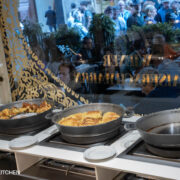
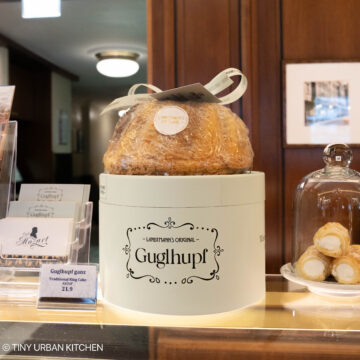
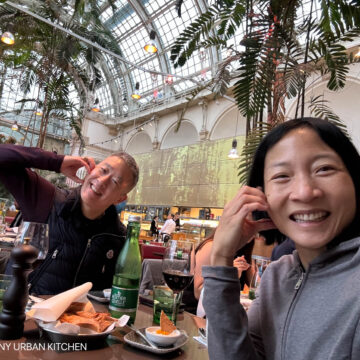
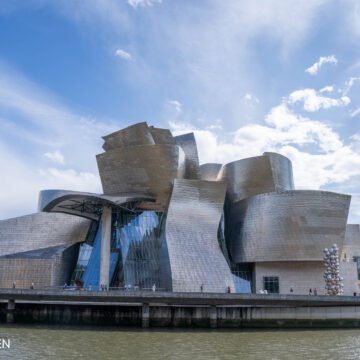
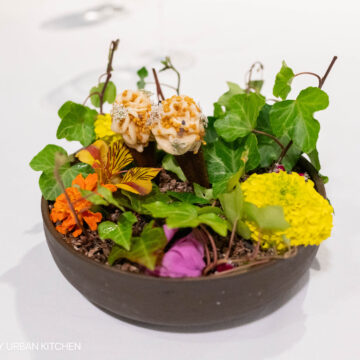
[…] Slightly bleary-eyed, we stepped out into the sunshine and walked about 20 minutes to our first meal in London. “Meat Fruit”, one of the signature dishes at Heston Blumenthal’s London […]